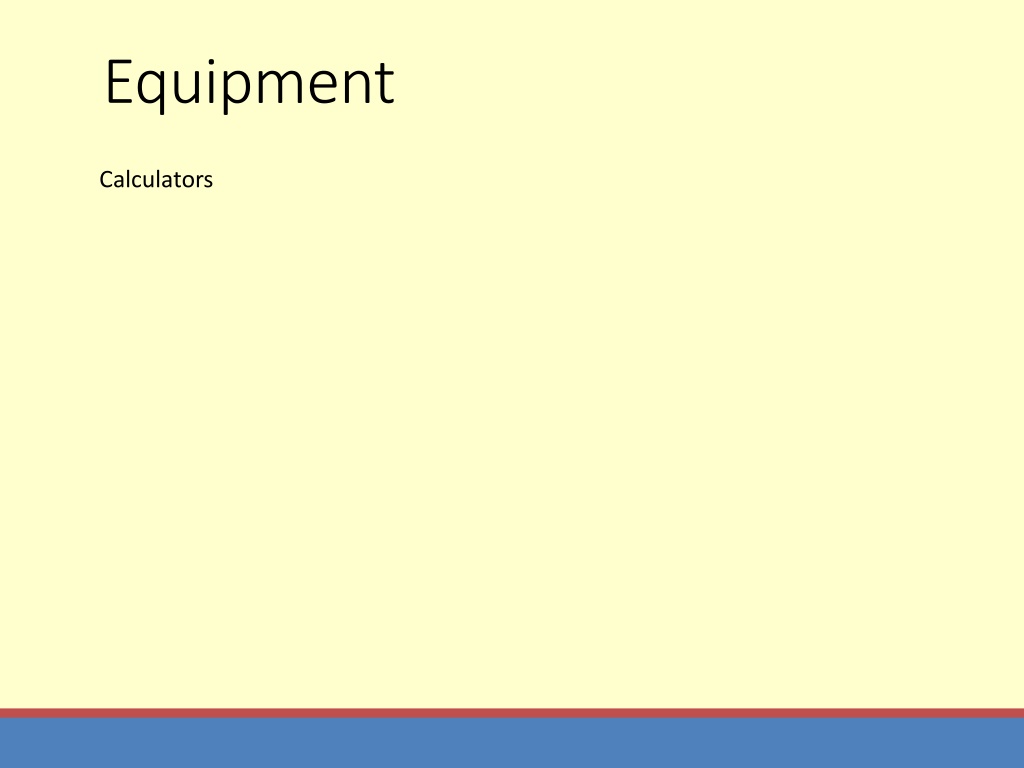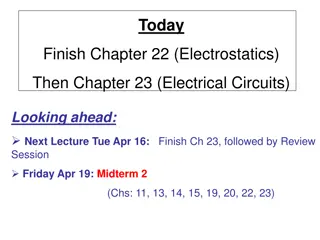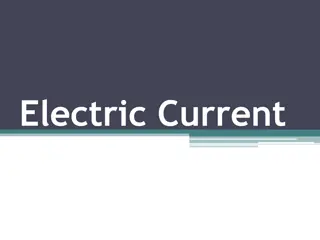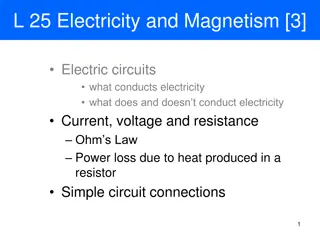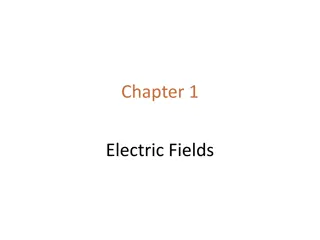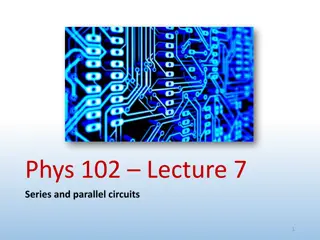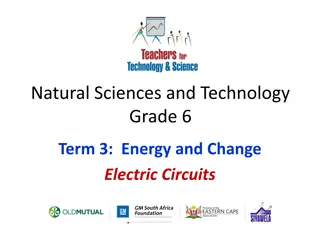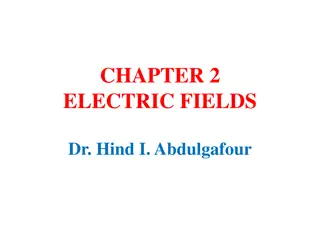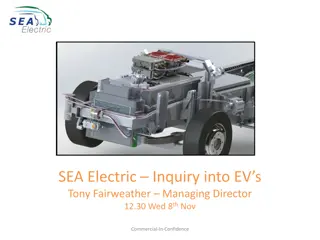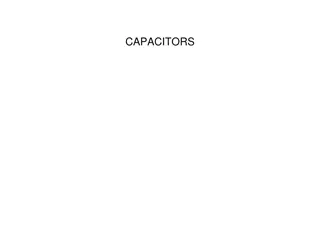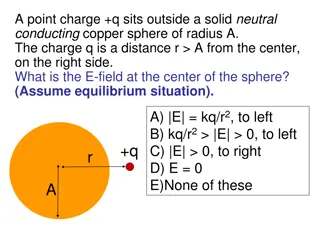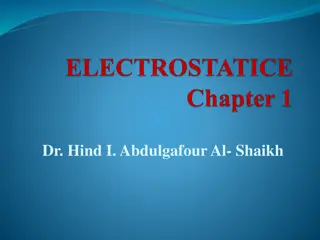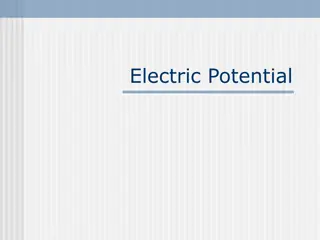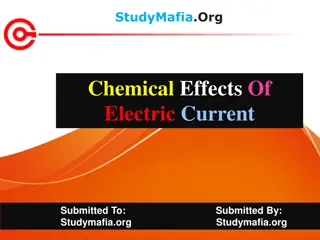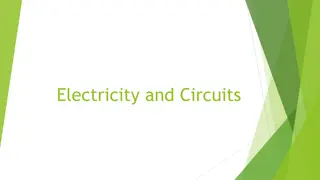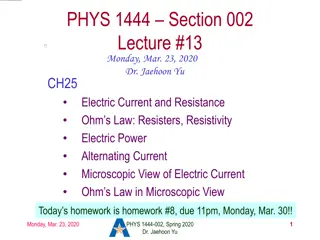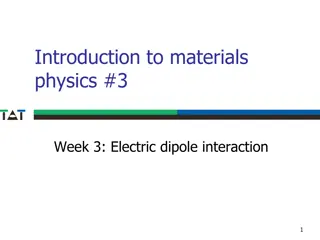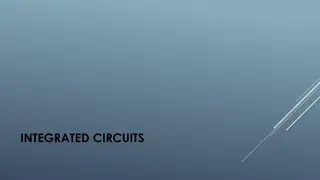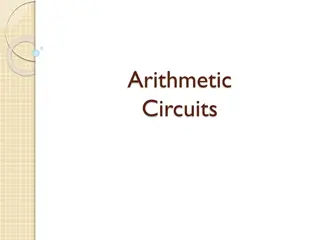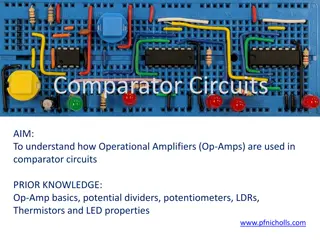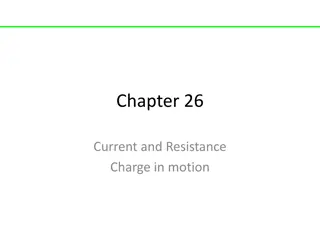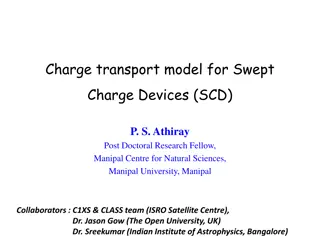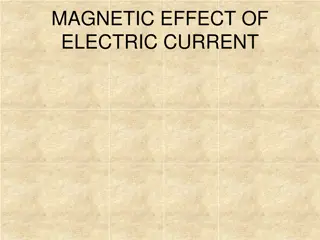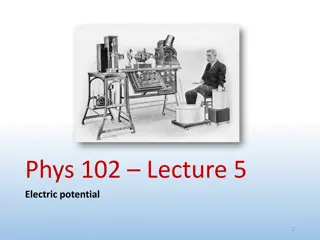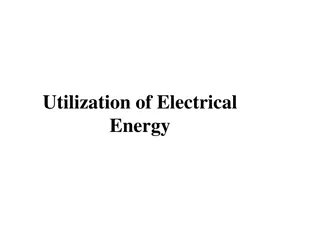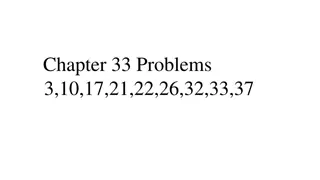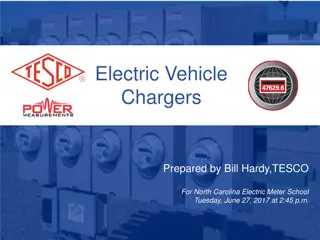Understanding Current and Charge in Electric Circuits
Learn how to calculate current and charge in electric circuits, identify circuit components, and perform calculations using the equation Q = It. Explore the concepts of current, charge flow, and key circuit symbols through practical examples and explanations. Enhance your understanding of electric circuits with this detailed lesson.
Download Presentation

Please find below an Image/Link to download the presentation.
The content on the website is provided AS IS for your information and personal use only. It may not be sold, licensed, or shared on other websites without obtaining consent from the author. Download presentation by click this link. If you encounter any issues during the download, it is possible that the publisher has removed the file from their server.
E N D
Presentation Transcript
Equipment Calculators
Date and title: Calculating current and charge Lesson intentions: How much charge flows around a circuit? 26 September, 2024 S t e p s Learning outcomes: 4 their symbols. Identify circuit components from t o Calculate the charge transferred by a steady current in a given time. 6 S u c c e s s 8 Perform a range of calculations, including rearrangement of the equation Q = It. Key words: Current, Charge, Amps, Coulombs
Calculating current and charge L.A.: Identify circuit components from their symbols. Calculate the charge transferred by a steady current in a given time. Perform a range of calculations, including rearrangement of the equation Q = It. 4 6 8
Starter Starter Draw and label these symbols Cell Ammeter Lamp (NOT BATTERY!) Battery Voltmeter Switch
BIGGER PICTURE Potential difference and resistance Component characteristics Current and charge Series Circuits TOPIC Electric Circuits Parallel Circuits
Key info Key info CURRENT Symbol: Measured in: SI Unit: I Amps A
Current (I) Current is the rate of flow of charge (i.e. how much charge is flowing past per second) So current is measured in Coulombs per second (C/s) BUT the C/s has its own particular name: the amp re, amp, or A.
So how do we work it out? If current is measured in Coulombs per second (C/s) What might the equation to Calculate it be?
Current = Charge / Time (in A) (in C) (in s) or I = Q / t Q I t
Example questions on current Charge (C) Current (A) 5 1 0.5 Time (s) 2 0.4 20 50 250 60 3 1) A circuit is switched on for 30s with a current of 3A. How much charge flowed? 2) During electrolysis 6A was passed through some copper chloride and a charge of 1200C flowed. How long was the experiment on for? 3) A bed lamp is switched on for 10 minutes. It works on a current of 0.5A. How much charge flowed?
Example questions on current Charge (C) 10 0.4 20 50 180 Current (A) 5 1 0.5 0.2 3 Time (s) 2 0.4 40 250 60 1) A circuit is switched on for 30s with a current of 3A. How much charge flowed? 2) During electrolysis 6A was passed through some copper chloride and a charge of 1200C flowed. How long was the experiment on for? 3) A bed lamp is switched on for 10 minutes. It works on a current of 0.5A. How much charge flowed?
Example questions on current Charge (C) 10 0.4 20 50 180 Current (A) 5 1 0.5 0.2 3 Time (s) 2 0.4 40 250 60 1) A circuit is switched on for 30s with a current of 3A. How much charge flowed? Q = I x t = 3 x 30 = 90 C 2) During electrolysis 6A was passed through some copper chloride and a charge of 1200C flowed. How long was the experiment on for? 3) A bed lamp is switched on for 10 minutes. It works on a current of 0.5A. How much charge flowed?
Example questions on current Charge (C) 10 0.4 20 50 180 Current (A) 5 1 0.5 0.2 3 Time (s) 2 0.4 40 250 60 1) A circuit is switched on for 30s with a current of 3A. How much charge flowed? Q = I x t = 3 x 30 = 90 C 2) During electrolysis 6A was passed through some copper chloride and a charge of 1200C flowed. How long was the experiment on for? t = Q / I = 1200 / 6 = 200 s 3) A bed lamp is switched on for 10 minutes. It works on a current of 0.5A. How much charge flowed?
Example questions on current Charge (C) 10 0.4 20 50 180 Current (A) 5 1 0.5 0.2 3 Time (s) 2 0.4 40 250 60 1) A circuit is switched on for 30s with a current of 3A. How much charge flowed? Q = I x t = 3 x 30 = 90 C 2) During electrolysis 6A was passed through some copper chloride and a charge of 1200C flowed. How long was the experiment on for? t = Q / I = 1200 / 6 = 200 s 3) A bed lamp is switched on for 10 minutes. It works on a current of 0.5A. How much charge flowed? Q = I x t = 0.5 x 600 = 300 C
Example question 4 Example question 4 Calculate the current when 4C passes a point in 8 seconds
Example Example question 5 question 5 An ammeter is records a current of 8A. Calculate how much charge is passing through the ammeter in 10 seconds.
Task Task 1. What is the current when 20C of charge pass through an ammeter in 2minutes? 2. A battery can produce 20A of current. How much charge does it discharge in 30s? 3. Another battery can produce a charge of 30A. How long will this battery be running before it has discharge the same amount of charge as the battery in Q2? 4. A car engine requires a battery that can produce a current of 40A to start. A mechanic places a battery that can discharge 100C in 30s into a car. Will this battery be good enough to start the car? Why? 5. For the question above, how much charge would the battery have to discharge in 30s to start the engine?
Knowledge Check Knowledge Check What are the key points to remember from Friday s lesson
